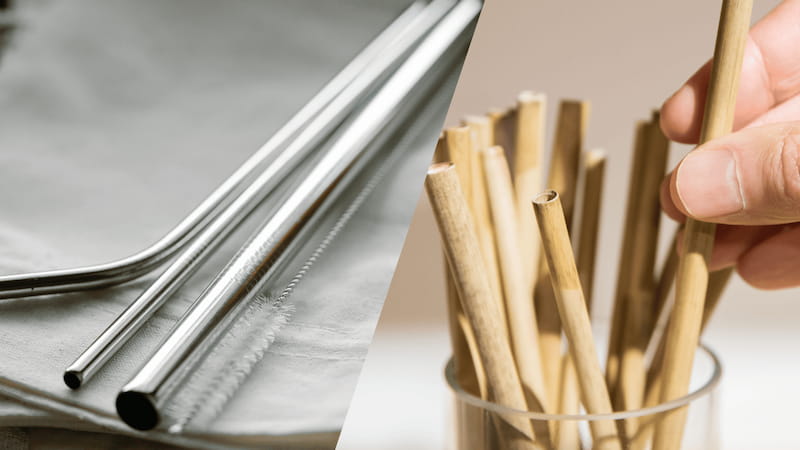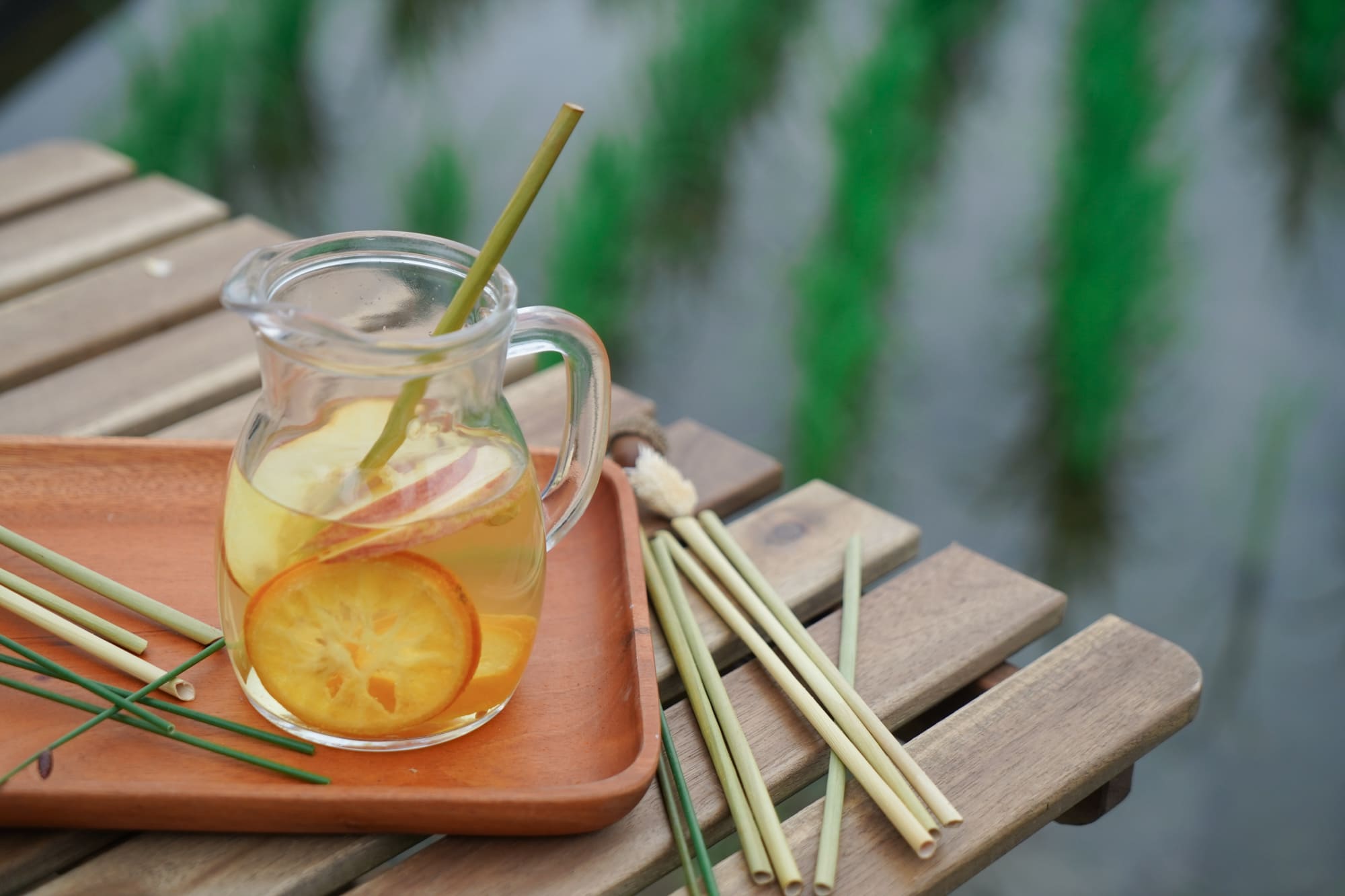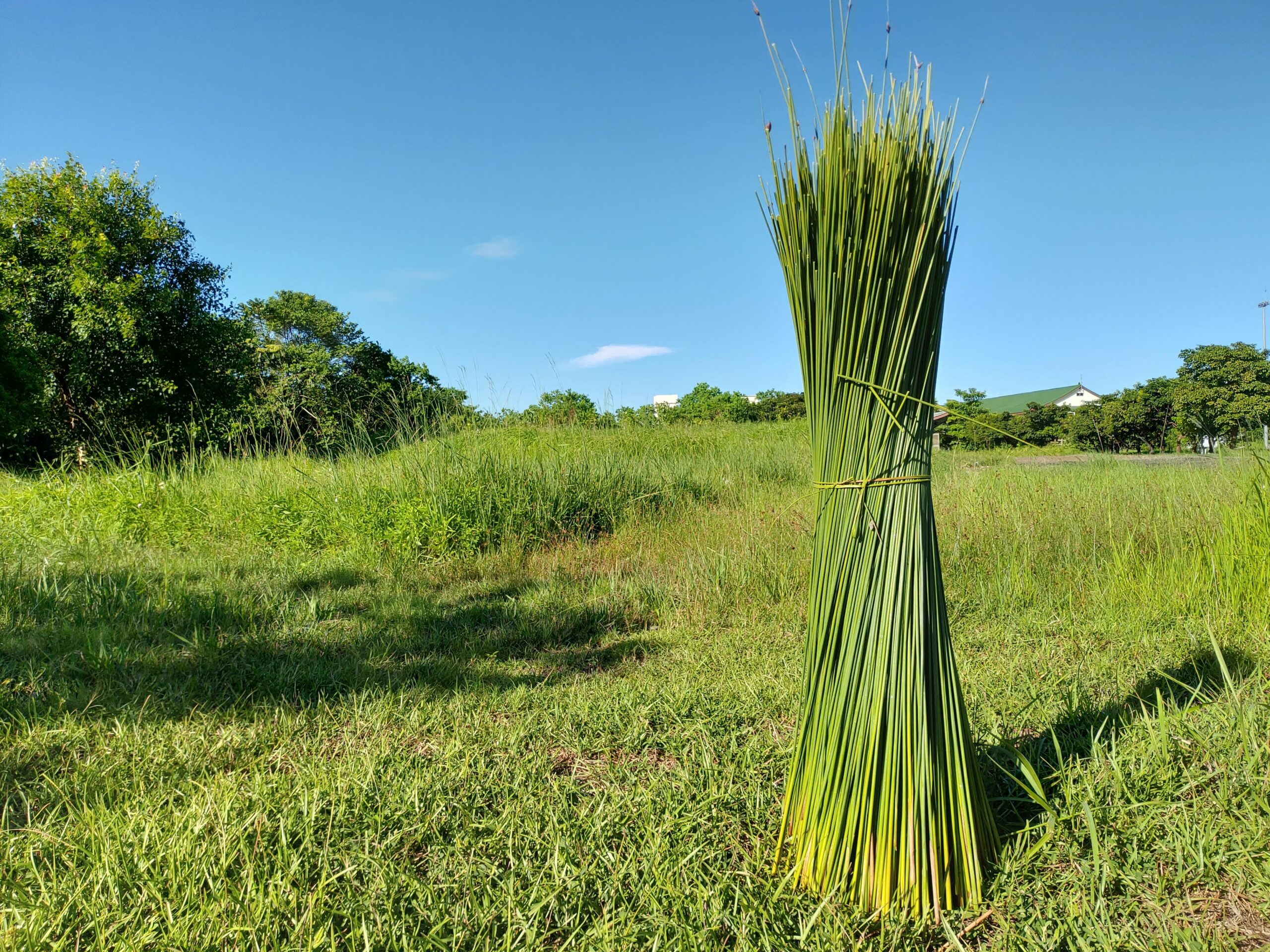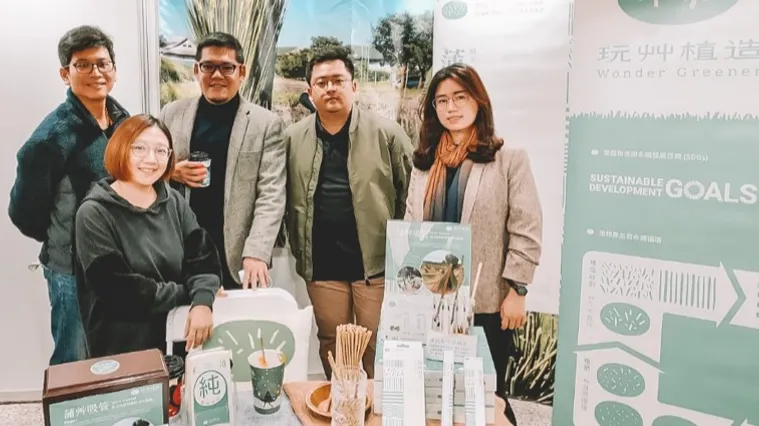As plastic straw bans continue to roll out, the eco-friendly straw market has exploded with countless options. From durable stainless steel and elegant glass to quick-use paper straws, the choices span both reusable and disposable alternatives — leaving consumers overwhelmed. While we all strive for sustainable solutions, are we truly making the right choice? In this article, we dive into the data to examine the full life cycle of these eco-straws — from production to disposal — uncovering the real carbon footprint behind each option. Most importantly, we explore whether grass straws can emerge as the truly sustainable answer we've been searching for.

Reusable vs. Disposable Straws:
Carbon Footprint Compared
Many people instinctively believe that any eco-friendly straw must be better for the environment than a plastic one. However, the truth might surprise you. According to an analysis by RE-THINK, we need to consider the full environmental cost of a straw—from production to disposal.
Reusable Straws: The High Bar for Being Truly Eco-Friendly
Stainless steel, glass, and bamboo straws are often seen as ideal eco-friendly choices among reusable options. However, to truly offset the carbon emissions generated during their production, these straws must be used repeatedly a certain number of times.

- Stainless Steel Straws: Due to their durable material, they can be reasonably used up to 500 times.
- Glass Straws: While also made of hard material, they are prone to breaking, with a reasonable usage lifespan of around 100 times.
- Bamboo Straws: More susceptible to moisture damage and mold, their reasonable usage is estimated at around 50 times.
In reality, most people find it difficult to use the same eco-friendly straw enough times. Due to cleaning hassles, easy loss, forgetting to carry it, breakage, or simply a preference for new products, these straws often end up unused or discarded before reaching their "carbon footprint break-even point." This leads to increased overconsumption and resource waste, trapping consumers in a cycle of green waste.
The Hidden Costs of Eco-Friendly Straws:
Carbon Footprint of Cleaning and Accessories
Even more surprising, data from RE-THINK reveals that Glass and Bamboo Straws—often labeled as “Eco-Friendly”—actually have the highest carbon emissions. This is mainly due to the carbon footprint associated with their cleaning and accessories.
- Cleaning Impact: Each wash generates additional carbon emissions. Compared to stainless steel straws’ 63% carbon footprint from cleaning, glass and bamboo straws produce 41% of carbon emissions per wash. Frequent cleaning consumes significant amounts of water and energy.
- Accessory Burden: Nylon cleaning brushes and storage bags that come with straws also consume electricity and diesel during production. These accessories account for a significant portion of the straw set’s carbon footprint—45% for bamboo straws, 38% for glass straws, and 16% for stainless steel straws.
This shows that if reusable straws are not used enough or are cleaned improperly, their overall environmental benefits can be greatly diminished—sometimes even exceeding the impact of certain single-use straws. This is precisely the trap of green waste.
Paper Straw Problems:
Elevated Carbon Impact and Unsatisfying Use
Paper Straws were one of the earliest alternatives to plastic straws. Many people have experienced them falling apart halfway through use after soaking in liquid, forcing them to grab a new one. This results in a very poor user experience.
More importantly, the environmental impact of manufacturing paper straws should not be underestimated. According to data from RE-THINK, producing paper straws involves logging trees and paper-making processes—including bleaching and shaping—and actually uses four times more material than plastic straws. Additionally, carbon emissions from paper production account for about 35% of the total footprint, while disposal contributes as much as 55%.
Notably, the carbon footprint of paper straws increases with the thickness (weight) of the paper used. To make paper straws more durable and less prone to becoming soggy, manufacturers often use heavier paper, which directly leads to significantly higher consumption of pulp, water, and energy—and consequently, higher carbon emissions.
Grass Straws: A Real Solution for Sustainability
Amid the dilemma faced by various eco-friendly straws, Grass Straws offer a fresh perspective. They break the eco myths surrounding single-use and reusable options and instead emerge as a more promising sustainable solution.

- True Biodegradability: Grass Straws are made from natural aquatic plants and contain no plastics or polymers. After use, they can be disposed of directly into soil or organic waste, where they naturally break down quickly, fully returning to nature without leaving any microplastics or environmental burden.
- Extremely Low Carbon Footprint: The life cycle carbon footprint of Grass Straws is only about 4 grams. This figure is much lower than that of many traditional plastic straws and even outperforms paper straws, making it a truly carbon-reducing choice.
- Powerful Carbon Sequestration: During its growth, reed plants efficiently absorb carbon dioxide from the atmosphere, demonstrating remarkable carbon sequestration ability. It’s estimated that one hectare of grass fields can absorb up to 400 metric tons of carbon annually, significantly offsetting the carbon emissions from their production process.
- Soil Organic Matter Accumulation: Uniquely, grass fields do not require tilling during harvest, allowing the soil to continuously build up organic matter. This gives the soil a strong carbon sequestration potential, further enhancing the overall carbon capture ability of reed cultivation.
- Excellent User Experience and Convenience: Unlike paper straws, which easily become soggy, Grass Straws are durable, odor-free, and maintain their shape for extended periods—offering a pleasant drinking experience. As a single-use alternative, they require no cleaning, perfectly addressing the key pain points of reusable straws. This makes them especially suitable for the food and beverage takeaway market.
Which Straw Is Truly the Most Eco-Friendly?
The answer to this question really depends on your consumption habits and lifestyle.
- If you’re truly able to use it consistently—and are committed to cleaning and carrying it regularly—then a durable stainless steel or glass straw can be a great choice. Their longevity allows their environmental benefits to be fully realized.
- If you’re looking for something simple and convenient while still doing your part for the planet—especially in situations where takeout is common and cleaning reusable straws is difficult—Grass Straws are a better choice. They eliminate the hassle of cleaning and naturally decompose after being tossed into food waste, making sustainability effortless.
- If you can skip the straw altogether and drink directly from the cup, that’s the best choice. After all, reducing production and consumption is the highest form of sustainability—and the ultimate expression of a low-plastic lifestyle.
Each type of eco-friendly straw has its own suitable use cases and environmental costs. The key lies in making informed choices—selecting products that align with your actual habits and ensuring their environmental benefits are fully realized. Blindly chasing the "eco-friendly" label without understanding the trade-offs can lead to a new form of green waste.
Choose the Solution That Suits You Best
To determine whether a product is truly eco-friendly, we must evaluate its full life cycle—from production and usage to disposal—and consider its overall environmental impact. While traditional eco-friendly straws are well-intentioned, in practice, they can sometimes lead to new forms of green waste due to high carbon emissions, cleaning burdens, and poor user experience.
When the use of straws is unavoidable, Grass Straws offer consumers and businesses a worry-free sustainable solution. With their extremely low carbon footprint, carbon sequestration benefits from cultivation, natural materials, and true biodegradability, they stand out as a powerful option that balances convenience and environmental care on the global path to reducing plastic waste. True sustainability is not just about choosing products labeled “eco-friendly,” but about adopting solutions that fit seamlessly into daily life, provide ease of use, and make a real positive impact on the planet.
Purchasing Grass Straws to earn government incentives.
More and more companies are focusing on ESG and reducing their carbon footprint but don’t know where to start. Create sustainable brand value and reduce emissions—while earning awards and doing the right thing!


